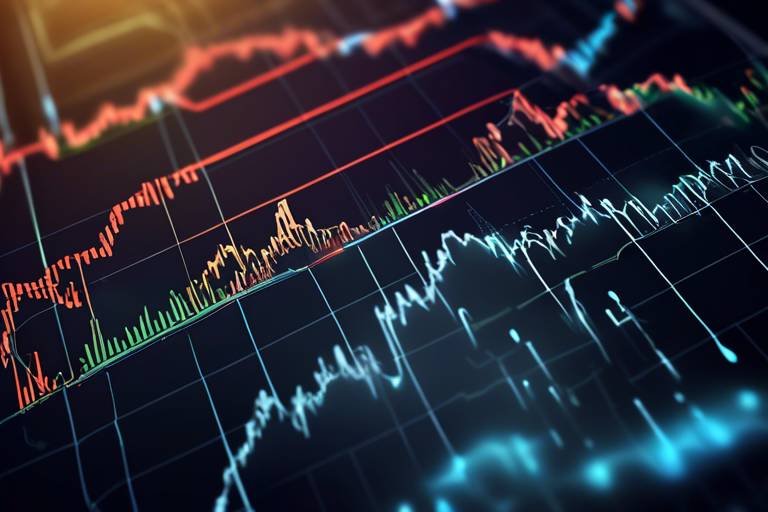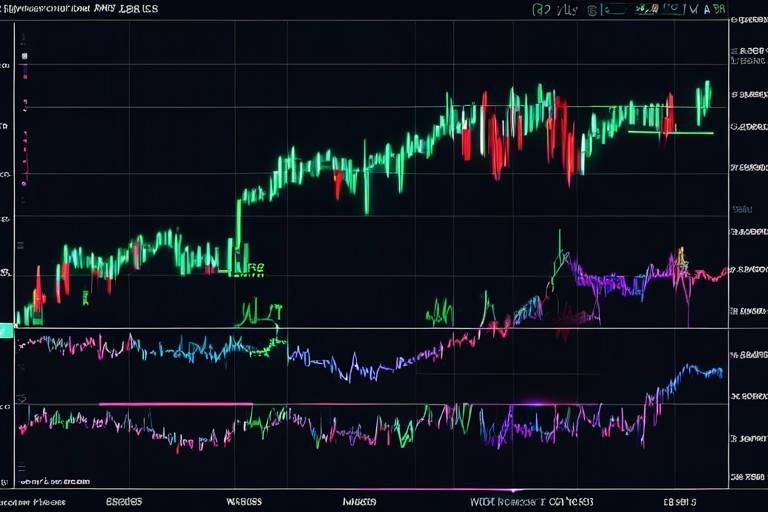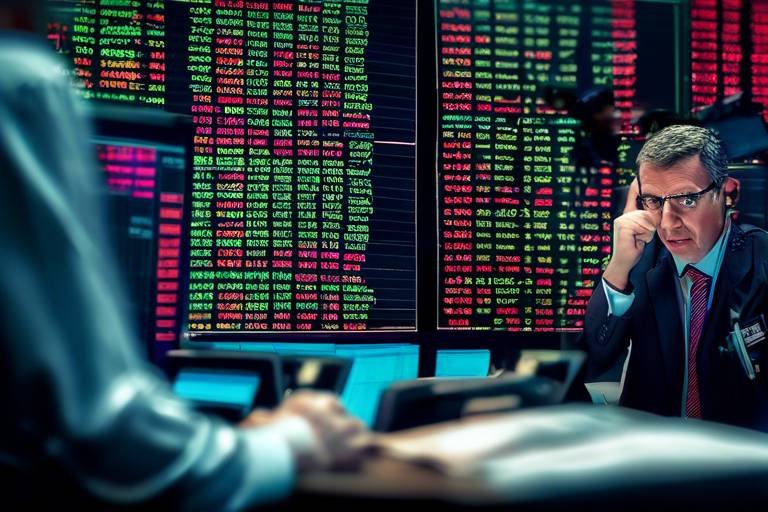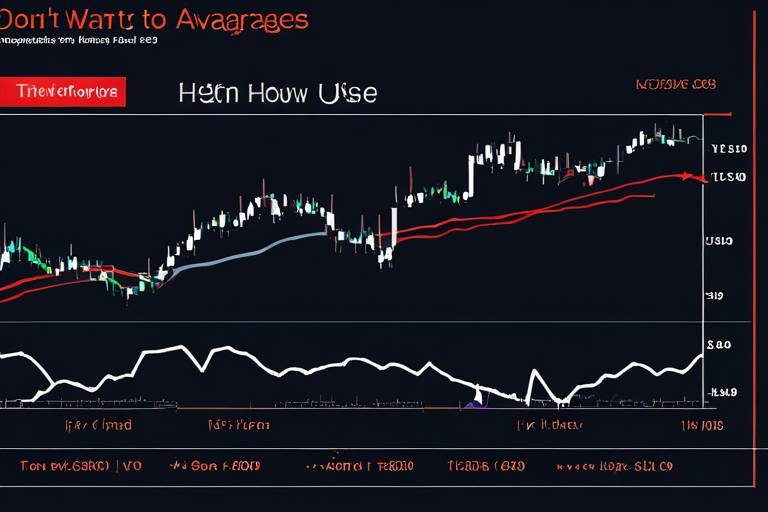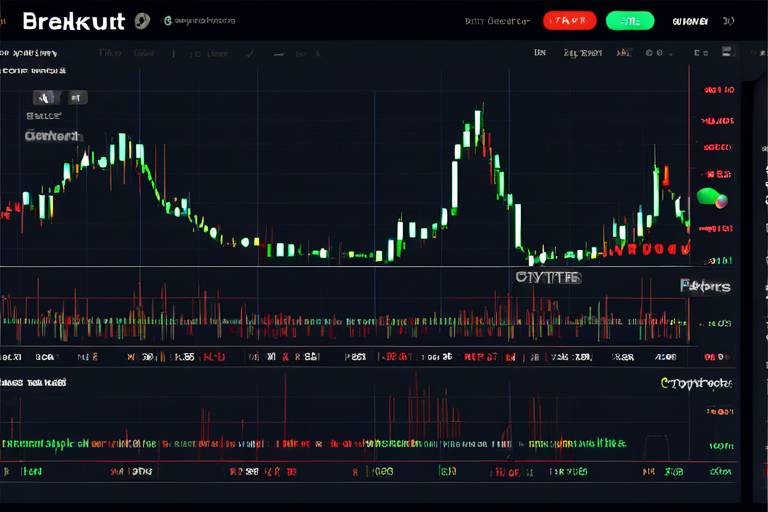How to Combine Fundamental and Technical Analysis in Crypto
This article explores the integration of fundamental and technical analysis in cryptocurrency trading, offering insights for traders seeking to enhance their decision-making processes and improve their overall investment strategies.
Fundamental analysis involves evaluating the intrinsic value of a cryptocurrency by examining various factors that can influence its price. Think of it as checking the health of a company before investing in its stock. In the world of crypto, this means diving into aspects like the technology behind the coin, the credibility of the team, market demand, and even macroeconomic influences. Each of these elements plays a crucial role in determining whether a cryptocurrency is likely to thrive or merely survive. For instance, a project with innovative technology and a strong team is more likely to succeed than one lacking these qualities.
On the flip side, technical analysis is all about the numbers and charts. It focuses on price movements and trading volumes, using historical data to identify patterns and trends that can help predict future price behavior in the crypto market. Imagine you're a detective, piecing together clues from past price actions to forecast what might happen next. This approach involves analyzing charts and indicators, which can reveal market sentiment and help traders make informed decisions.
Technical analysts utilize various indicators to assess market conditions. Some of the most popular include:
- Moving Averages: These smooth out price data to help identify trends over specific periods.
- Relative Strength Index (RSI): This measures the speed and change of price movements, indicating overbought or oversold conditions.
- MACD (Moving Average Convergence Divergence): This indicator helps determine the momentum of a cryptocurrency by comparing two moving averages.
Moving averages are a fundamental tool in technical analysis. They help traders recognize whether the market is in a bullish or bearish phase. By smoothing out price data, moving averages can highlight trends over specific periods, allowing traders to spot potential entry or exit points. For example, if the price crosses above a moving average, it could signal a buying opportunity.
The RSI is another essential tool that traders use to gauge market conditions. It measures the speed and change of price movements, providing insights into whether a cryptocurrency is overbought or oversold. An RSI above 70 typically indicates that a cryptocurrency may be overbought, suggesting a potential price correction, while an RSI below 30 may signal that it is oversold and could rebound.
When performing fundamental analysis, it's crucial to evaluate factors like:
- Project Utility: What problem does the cryptocurrency solve?
- Team Credibility: Who is behind the project, and what is their track record?
- Partnerships: Are there any strategic partnerships that enhance the project's credibility?
- Regulatory Environment: What are the legal implications of investing in this cryptocurrency?
Each of these factors can significantly influence a cryptocurrency's long-term success. For example, a project with strong utility and a reputable team is more likely to gain traction in the market.
Combining fundamental and technical analysis allows traders to gain a more comprehensive view of the market. It's like having a map and a compass; both are essential for navigating the often-turbulent waters of cryptocurrency trading. By understanding the intrinsic value of a cryptocurrency through fundamental analysis and assessing market sentiment through technical analysis, traders can make more informed decisions.
A balanced strategy incorporates both analyses, where fundamental insights guide long-term investment decisions while technical analysis aids in timing entries and exits for optimal trading performance. This dual approach not only helps in identifying potential cryptocurrencies to invest in but also in determining the best times to buy or sell.
Implementing a combined approach can lead to more effective trading strategies. By leveraging the strengths of both analyses, traders can navigate the volatile cryptocurrency market with greater confidence. For instance, a trader might discover a promising project through fundamental analysis and then use technical indicators to time their entry point perfectly, maximizing their potential returns.
Q: Can I rely solely on technical analysis for trading?
A: While technical analysis can provide valuable insights, it’s essential to consider fundamental factors as well. A strong technical setup can fail if the underlying project lacks substance.
Q: How often should I analyze my investments?
A: Regular analysis is key. Markets can change rapidly, so staying informed about both technical and fundamental developments is crucial.
Q: Is it possible to predict the market accurately?
A: While combining both analyses can improve your chances, no method guarantees accuracy. The crypto market is inherently volatile and unpredictable.

Understanding Fundamental Analysis
This article explores the integration of fundamental and technical analysis in cryptocurrency trading, offering insights for traders seeking to enhance their decision-making processes and improve their overall investment strategies.
Fundamental analysis is a crucial aspect of cryptocurrency trading that goes beyond mere price charts and market trends. It involves evaluating the intrinsic value of a cryptocurrency by examining various underlying factors. Think of it as trying to understand the heart and soul of a project rather than just its market performance. Traders who engage in fundamental analysis look at several key elements:
- Technology: What makes the cryptocurrency unique? Is the technology behind it innovative, scalable, and secure?
- Team: Who are the people behind the project? Are they experienced and credible in the crypto space?
- Market Demand: Is there a real need for this cryptocurrency? What problems does it solve?
- Macroeconomic Influences: How do economic factors, such as regulations and market trends, impact the cryptocurrency's potential?
By analyzing these factors, traders can gauge the potential for long-term success and value appreciation of a cryptocurrency. For instance, if a project has a strong team, innovative technology, and a clear use case, it might be seen as a solid investment. Conversely, if the project is shrouded in uncertainty or lacks a defined purpose, it could be a red flag.
Furthermore, understanding the broader macroeconomic environment is essential. Factors like regulatory changes, market sentiment, and global economic trends can significantly influence the price movements of cryptocurrencies. For example, a favorable regulatory announcement could lead to a surge in demand, while negative news could trigger sell-offs. Hence, keeping an eye on these external influences is vital for any trader looking to make informed decisions.
Ultimately, fundamental analysis provides a comprehensive view of a cryptocurrency's potential, allowing traders to make decisions based on more than just price action. It’s like having a roadmap that guides you through the often tumultuous landscape of the crypto market, helping you identify opportunities that others might overlook.
Technical analysis focuses on price movements and trading volumes, using historical data and charts to identify patterns and trends that can help predict future price behavior in the crypto market.
Technical analysts utilize various indicators such as moving averages, RSI, and MACD to assess market conditions and make informed trading decisions based on historical price movements.
Moving averages smooth out price data to identify trends over specific periods, helping traders recognize bullish or bearish market conditions and potential entry or exit points.
The RSI measures the speed and change of price movements, indicating overbought or oversold conditions, which can signal potential reversals or continuations in price trends.
When performing fundamental analysis, it's crucial to evaluate factors like project utility, team credibility, partnerships, and regulatory environment, as these elements significantly influence a cryptocurrency's long-term success.
Combining fundamental and technical analysis allows traders to gain a comprehensive view of the market, enhancing their ability to make informed decisions based on both intrinsic value and market sentiment.
A balanced strategy incorporates both analyses, where fundamental insights guide long-term investment decisions, while technical analysis aids in timing entries and exits for optimal trading performance.
Implementing a combined approach can lead to more effective trading strategies, as traders can leverage the strengths of both analyses to navigate the volatile cryptocurrency market with greater confidence.
1. What is the difference between fundamental and technical analysis?
Fundamental analysis focuses on assessing the intrinsic value of a cryptocurrency based on various underlying factors, while technical analysis looks at price movements and trading volumes to predict future price behavior.
2. How can I start using fundamental analysis?
Begin by researching the cryptocurrency's technology, team, market demand, and any relevant macroeconomic factors. This will help you understand the project's potential and make informed investment decisions.
3. Why is it important to combine both analyses?
Combining both analyses provides a more comprehensive view of the market, allowing traders to make decisions based on both the intrinsic value of a cryptocurrency and current market sentiment.

Understanding Technical Analysis
When it comes to navigating the often turbulent waters of cryptocurrency trading, technical analysis serves as a powerful compass. This method revolves around the study of price movements and trading volumes, harnessing historical data to predict future price behavior. Just like a detective analyzing clues from a crime scene, technical analysts sift through charts and patterns to uncover hidden trends that can inform their trading decisions. It’s a fascinating blend of art and science, where data meets intuition.
One of the key aspects of technical analysis is its reliance on charts. These visual representations of price movements over time can reveal trends that are not immediately apparent from raw data. By examining different time frames—be it minutes, hours, or days—traders can identify short-term fluctuations as well as long-term trends. This is akin to watching a movie in slow motion; you begin to notice details that you might miss when watching at normal speed.
Moreover, technical analysis is not just about looking at the charts; it also involves utilizing various indicators that can help traders gauge market conditions. Some of the most popular indicators include:
- Moving Averages: These help smooth out price data to identify trends over specific periods.
- Relative Strength Index (RSI): This measures the speed and change of price movements.
- Moving Average Convergence Divergence (MACD): This is used to identify potential buy and sell signals.
These indicators act like instruments in a musician's toolkit, each serving a unique purpose to create a harmonious trading strategy. For example, moving averages can help traders determine whether a market is in a bullish or bearish phase, while RSI can signal when a cryptocurrency is overbought or oversold. Understanding how to read and interpret these indicators can significantly enhance a trader's ability to make informed decisions.
To put it simply, technical analysis is like having a map in a dense forest. It doesn’t guarantee you won’t encounter obstacles, but it certainly increases your chances of finding your way out. By combining various indicators and chart patterns, traders can develop a more nuanced understanding of market dynamics, allowing them to make calculated moves rather than relying solely on gut feelings.
In conclusion, mastering technical analysis is crucial for any crypto trader aiming to enhance their decision-making process. It’s not just about predicting price movements; it’s about understanding the psychology of the market and how traders react to various stimuli. The more you delve into this analytical method, the more equipped you’ll be to navigate the exhilarating—and sometimes terrifying—world of cryptocurrency trading.

Key Indicators in Technical Analysis
When diving into the world of technical analysis, traders often rely on a set of key indicators that serve as their guiding stars. These indicators help in deciphering the complex language of price movements and trading volumes, allowing traders to make informed decisions. Among the most widely used indicators are Moving Averages, Relative Strength Index (RSI), and Moving Average Convergence Divergence (MACD).
Moving Averages are crucial for identifying trends over specific periods. They work by smoothing out price data, which helps eliminate the noise from random price fluctuations. Imagine trying to read a book while someone is constantly flipping the pages; it becomes challenging to focus on the story. Similarly, moving averages help traders focus on the overarching trend rather than getting distracted by short-term volatility. There are two main types of moving averages: the Simple Moving Average (SMA) and the Exponential Moving Average (EMA). The SMA calculates the average price over a set number of periods, while the EMA gives more weight to recent prices, making it more responsive to new information.
Next up is the Relative Strength Index (RSI). This nifty little tool measures the speed and change of price movements, helping traders identify whether a cryptocurrency is overbought or oversold. The RSI ranges from 0 to 100, with levels above 70 indicating that an asset may be overbought and levels below 30 suggesting it may be oversold. Think of the RSI as a temperature gauge for the market; just like you wouldn't want to wear a winter coat in the summer, you wouldn’t want to buy an overbought asset without considering potential price corrections.
Another powerful indicator is the Moving Average Convergence Divergence (MACD). This tool helps traders identify changes in momentum by comparing two moving averages. It consists of the MACD line, the signal line, and the histogram. When the MACD line crosses above the signal line, it can signal a bullish trend, while a cross below may indicate a bearish trend. This is akin to a traffic light: when it turns green, it’s a go, and when it turns red, it’s time to stop and reassess.
Incorporating these indicators into your trading strategy can significantly enhance your decision-making process. However, it's essential to remember that no indicator is foolproof. They should be used in conjunction with other analyses and market factors to create a well-rounded trading strategy. By understanding how these indicators work, traders can better navigate the often turbulent waters of the cryptocurrency market.
In summary, mastering these key indicators is like having a toolbox filled with essential tools for building a solid trading strategy. Whether you’re a seasoned trader or just starting, familiarizing yourself with Moving Averages, RSI, and MACD can provide you with the insights needed to make more informed trading decisions.
- What is the best indicator for cryptocurrency trading?
The best indicator often depends on your trading style. Many traders find a combination of Moving Averages and RSI effective. - How often should I check my indicators?
It’s advisable to check your indicators regularly, especially during volatile market conditions, but avoid over-trading based on short-term fluctuations. - Can I rely solely on technical analysis?
While technical analysis is powerful, it’s best used alongside fundamental analysis for a comprehensive view of the market.

Moving Averages Explained
Moving averages are one of the most widely used tools in technical analysis, acting as a compass for traders navigating the often tumultuous waters of the cryptocurrency market. Imagine you're sailing in a vast ocean; without a compass, you might drift aimlessly. In the same way, moving averages help traders identify the direction of the market trend by smoothing out price data over a specific period. This smoothing process reduces the noise caused by short-term fluctuations, allowing traders to focus on the underlying trend.
There are two primary types of moving averages that traders commonly utilize: the Simple Moving Average (SMA) and the Exponential Moving Average (EMA). Each type has its unique characteristics and applications, providing different insights into market behavior. The SMA calculates the average price over a set number of periods, giving equal weight to all prices within that timeframe. Meanwhile, the EMA gives more weight to recent prices, making it more responsive to new information. This responsiveness can be crucial in the fast-paced world of crypto trading, where market conditions can change in the blink of an eye.
To illustrate how these moving averages can be applied in trading, let's consider a hypothetical scenario. Suppose a trader is analyzing Bitcoin's price movements over the past 50 days. By calculating the SMA, the trader can observe the average price over those days, which might show a gradual increase, indicating a bullish trend. Conversely, if the EMA shows a sharp rise due to recent price spikes, it might suggest that the momentum is building, and a buying opportunity could be on the horizon.
Using moving averages effectively involves recognizing key signals, such as crossovers. A crossover occurs when a shorter moving average crosses above or below a longer moving average, signaling potential buy or sell opportunities. For example:
| Type of Crossover | Signal |
|---|---|
| Golden Cross | Short-term MA crosses above long-term MA (Bullish signal) |
| Death Cross | Short-term MA crosses below long-term MA (Bearish signal) |
In addition to crossovers, traders often look at the distance between moving averages. A wider gap may indicate a strong trend, while a narrowing gap could suggest a potential reversal or consolidation phase. By understanding these dynamics, traders can make more informed decisions about when to enter or exit positions.
In summary, moving averages are not just numbers on a chart; they are powerful indicators that can enhance a trader's strategy. By integrating both SMA and EMA into their analysis, traders can gain a clearer picture of market trends and make decisions with greater confidence. Whether you're a seasoned trader or just starting out, mastering moving averages can significantly improve your trading toolkit.
- What is the main difference between SMA and EMA? The main difference lies in how they weigh price data; SMA gives equal weight to all prices, while EMA gives more weight to recent prices.
- How can I determine the best period for moving averages? The best period often depends on your trading style; shorter periods are better for day trading, while longer periods suit long-term investors.
- Can moving averages be used in all markets? Yes, moving averages can be applied to any financial market, including stocks, forex, and cryptocurrencies.

Relative Strength Index (RSI)
The is a powerful momentum oscillator that measures the speed and change of price movements in the cryptocurrency market. It's often used by traders to identify potential reversal points by assessing whether a cryptocurrency is overbought or oversold. Imagine you're trying to gauge the excitement in a room; the RSI does something similar but for market sentiment. When the RSI value is above 70, it indicates that the asset might be overbought, suggesting a potential price pullback. Conversely, an RSI below 30 indicates that the asset may be oversold, hinting at a possible price rise.
Understanding how to interpret the RSI can significantly enhance your trading strategy. The RSI ranges from 0 to 100, with readings typically categorized into three zones:
| Zone | RSI Range | Interpretation |
|---|---|---|
| Overbought | 70 - 100 | Potential price decline |
| Neutral | 30 - 70 | Market is balanced |
| Oversold | 0 - 30 | Potential price increase |
One of the most effective ways to use the RSI is by looking for divergences. A divergence occurs when the price of a cryptocurrency moves in the opposite direction of the RSI. For example, if the price is making higher highs while the RSI is making lower highs, this divergence can be a strong indication that a reversal may be imminent. This phenomenon can be likened to a rubber band being stretched too far; eventually, it will snap back.
However, while the RSI is a fantastic tool, it’s essential to remember that no indicator is foolproof. It's best to use the RSI in conjunction with other technical indicators and fundamental analysis to make well-rounded trading decisions. Think of it as a piece of a larger puzzle—when combined with other tools, it can provide a clearer picture of market dynamics.
- What is the ideal RSI level for trading? Generally, an RSI above 70 indicates overbought conditions, while below 30 indicates oversold conditions.
- Can the RSI be used for all cryptocurrencies? Yes, the RSI can be applied to any cryptocurrency, but it's essential to consider market volatility and liquidity.
- How often should I check the RSI? It's advisable to monitor the RSI regularly, especially during significant market movements or before making trading decisions.

Fundamental Factors to Consider
This article explores the integration of fundamental and technical analysis in cryptocurrency trading, offering insights for traders seeking to enhance their decision-making processes and improve their overall investment strategies.
Fundamental analysis involves evaluating the intrinsic value of a cryptocurrency by examining various factors, including technology, team, market demand, and macroeconomic influences that can affect price movements.
Technical analysis focuses on price movements and trading volumes, using historical data and charts to identify patterns and trends that can help predict future price behavior in the crypto market.
Technical analysts utilize various indicators such as moving averages, RSI, and MACD to assess market conditions and make informed trading decisions based on historical price movements.
Moving averages smooth out price data to identify trends over specific periods, helping traders recognize bullish or bearish market conditions and potential entry or exit points.
The RSI measures the speed and change of price movements, indicating overbought or oversold conditions, which can signal potential reversals or continuations in price trends.
When diving into the world of cryptocurrency, understanding the fundamental factors that influence a coin’s value is crucial. These factors can often be the difference between a successful investment and a costly mistake. Here are some key elements to keep in mind:
- Project Utility: Does the cryptocurrency solve a real-world problem? A coin with genuine utility is more likely to gain adoption and, consequently, value.
- Team Credibility: Who is behind the project? A strong team with a proven track record can instill confidence in investors.
- Partnerships: Are there any notable partnerships? Collaborations with established companies can enhance a project's credibility and market reach.
- Regulatory Environment: Is the cryptocurrency compliant with regulations? Understanding the legal landscape can help assess potential risks associated with investments.
Each of these factors plays a significant role in shaping the long-term success of a cryptocurrency. For instance, a project that has strong utility and a reputable team is more likely to withstand market volatility and regulatory scrutiny. Conversely, a coin that lacks a solid foundation may struggle to gain traction, regardless of market trends.
Moreover, the market demand for a cryptocurrency can fluctuate based on various external influences such as economic conditions, technological advancements, and even social media trends. Therefore, keeping an eye on these factors can provide valuable insights into potential price movements. In essence, a thorough understanding of fundamental analysis equips traders with the knowledge to make informed decisions, potentially leading to more successful investment outcomes.
Combining fundamental and technical analysis allows traders to gain a comprehensive view of the market, enhancing their ability to make informed decisions based on both intrinsic value and market sentiment.
A balanced strategy incorporates both analyses, where fundamental insights guide long-term investment decisions, while technical analysis aids in timing entries and exits for optimal trading performance.
Implementing a combined approach can lead to more effective trading strategies, as traders can leverage the strengths of both analyses to navigate the volatile cryptocurrency market with greater confidence.
- What is the difference between fundamental and technical analysis?
Fundamental analysis focuses on the intrinsic value of a cryptocurrency based on various factors, while technical analysis looks at price movements and historical data to predict future trends.
- How can I effectively combine both analyses?
By using fundamental analysis to select strong projects and technical analysis to determine optimal entry and exit points, traders can create a well-rounded investment strategy.
- What are some common indicators used in technical analysis?
Common indicators include moving averages, Relative Strength Index (RSI), and MACD, which help traders assess market conditions.

Integrating Both Analyses
Integrating both fundamental and technical analysis in cryptocurrency trading is like having a powerful toolkit at your disposal. Think of it as blending two distinct flavors to create a delicious dish. By merging these two analytical approaches, traders can develop a more rounded perspective on the market, allowing for better decision-making and enhanced trading strategies. When you combine the insights from fundamental analysis—which focuses on the underlying value and potential of a cryptocurrency—with the actionable signals derived from technical analysis, you create a robust framework for navigating the often turbulent waters of crypto trading.
Imagine you’re navigating a ship through a storm. Fundamental analysis serves as your compass, helping you understand the overall direction and potential of the cryptocurrency based on its real-world applications and market dynamics. On the other hand, technical analysis acts as your radar, revealing the immediate conditions of the sea—price movements and trading volumes—allowing you to make quick adjustments to your course. This dual approach not only enhances your understanding of the market but also equips you with the tools necessary to make informed decisions.
To effectively integrate both analyses, consider the following strategies:
- Use Fundamental Insights to Inform Technical Decisions: Before diving into the charts, take a moment to evaluate the fundamental aspects of a cryptocurrency. What is its utility? Who are the developers? Are there any upcoming partnerships that could impact its value? This foundational knowledge can guide your technical analysis, helping you to focus on cryptocurrencies that have strong potential for growth.
- Identify Key Technical Indicators: Once you have a fundamental understanding, use technical indicators to time your entries and exits. For instance, if a cryptocurrency has a solid project backing it but is currently experiencing a price dip, technical analysis can help you pinpoint the best moment to buy in.
- Monitor Market Sentiment: Keep an eye on how the market reacts to news and developments. Fundamental analysis can provide insights into the long-term viability of a project, while technical analysis can help you gauge market sentiment. This combination can be crucial during volatile periods.
By creating a balanced strategy that incorporates both analyses, traders can significantly improve their chances of success in the crypto market. This approach allows for a more nuanced understanding of market movements, as it takes into account both the intrinsic value of a cryptocurrency and the external factors that influence its price. In essence, you’re not just guessing when to buy or sell; you’re making informed decisions based on a comprehensive analysis of both the project and the market conditions.
Moreover, the integration of these two analyses can lead to a more disciplined trading strategy. When traders rely solely on one method, they may miss out on crucial insights that the other can provide. For example, a trader who only uses technical analysis might enter a position based on a bullish chart pattern without realizing that significant negative news about the project has just been released. Conversely, a trader focusing only on fundamentals might overlook a short-term trading opportunity that technical indicators clearly signal.
In conclusion, integrating fundamental and technical analysis is not just about enhancing your trading strategy; it's about creating a holistic view of the cryptocurrency landscape. This combined approach enables traders to navigate the complexities of the market with greater confidence and precision, ultimately leading to more successful trading outcomes.
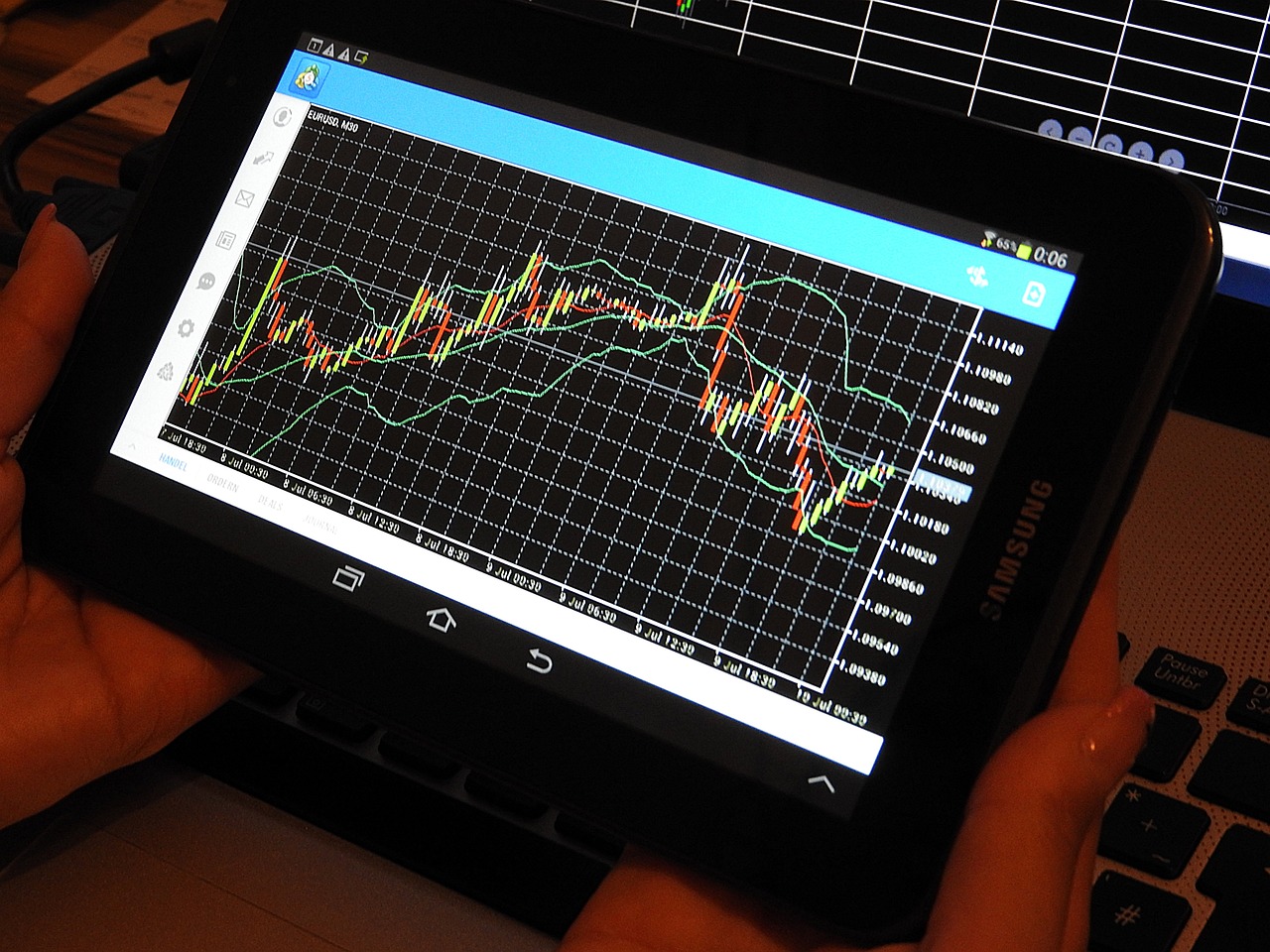
Creating a Balanced Strategy
Creating a balanced strategy in cryptocurrency trading is akin to crafting a well-balanced meal; you need the right ingredients to nourish your investment portfolio. By integrating both fundamental and technical analysis, traders can develop a holistic approach that not only identifies potential cryptocurrencies to invest in but also pinpoints the optimal moments to enter and exit trades. This dual approach ensures that you are not just chasing trends but also understanding the underlying value of the assets you are dealing with.
At the heart of a balanced strategy is the recognition that both analyses serve distinct yet complementary purposes. Fundamental analysis dives deep into the essence of a cryptocurrency, assessing factors such as its utility, team credibility, and market demand. On the other hand, technical analysis focuses on the price movements and trading volumes, providing insights into market sentiment and potential future price behavior. By leveraging both, traders can create a strategy that is not only informed by solid research but also responsive to market dynamics.
For instance, imagine you’ve identified a promising cryptocurrency project through fundamental analysis. You’ve evaluated its technology, the experience of its team, and its potential for market adoption. However, if you neglect technical analysis, you might end up buying at a peak price, only to watch your investment decline shortly after. Conversely, if you rely solely on technical indicators without understanding the fundamentals, you could miss out on long-term opportunities or fall victim to market manipulation.
To effectively integrate these analyses, consider the following steps:
- Conduct Thorough Research: Start with fundamental analysis to identify cryptocurrencies that have strong fundamentals. Look for projects with a clear use case, a dedicated team, and a supportive community.
- Utilize Technical Indicators: Once you’ve identified potential investments, use technical analysis to determine the best entry and exit points. Indicators like moving averages and RSI can provide valuable insights into market trends.
- Monitor Market Conditions: Stay updated on market news and events that could impact both the fundamentals and technicals of your investments. This can help you adjust your strategy as necessary.
By following these steps, you can create a balanced strategy that not only aims for short-term gains but also positions you for long-term success in the ever-evolving cryptocurrency landscape. Remember, the goal is to harmonize your understanding of market sentiment with the intrinsic value of your chosen assets. This balance empowers you to make informed decisions, reducing the emotional rollercoaster that often accompanies trading.
Q1: Why should I combine fundamental and technical analysis?
A1: Combining both analyses provides a more comprehensive view of the market. Fundamental analysis helps you understand the intrinsic value of a cryptocurrency, while technical analysis aids in timing your trades effectively.
Q2: How often should I reassess my strategy?
A2: Regularly reassessing your strategy is crucial, especially in the volatile crypto market. Consider reviewing your strategy monthly or after significant market events.
Q3: Can I rely solely on technical analysis?
A3: While technical analysis can provide valuable insights, relying solely on it may lead to missed opportunities. It’s essential to understand the fundamentals to make informed decisions.

Real-World Application
In the fast-paced world of cryptocurrency trading, the ability to effectively combine fundamental and technical analysis can significantly enhance a trader's success rate. Imagine you're a pilot navigating through stormy weather; having both a detailed map (fundamental analysis) and advanced instruments (technical analysis) helps you make informed decisions that keep you on course. When traders apply both analyses, they can better interpret market signals, leading to more confident and strategic trading.
For instance, consider a trader who is eyeing a promising new cryptocurrency. By conducting thorough fundamental analysis, they might discover that the project has a strong use case, a dedicated development team, and solid partnerships. However, without understanding the current market trends and price movements through technical analysis, they might miss the opportune moment to buy in. By analyzing charts and indicators like moving averages and the Relative Strength Index (RSI), they can pinpoint the best entry and exit points, maximizing their potential gains.
Moreover, the real-world application of this combined approach can also be seen during significant market events. For example, when a major regulatory announcement is made, fundamental analysis helps traders gauge the potential impact on a cryptocurrency's value. Simultaneously, technical analysis can reveal how the market reacts to such news, allowing traders to adjust their strategies accordingly. This dual approach not only prepares them for immediate market fluctuations but also aids in long-term investment planning.
To illustrate the effectiveness of integrating both analyses, let's take a look at a hypothetical scenario:
| Scenario | Fundamental Analysis Insight | Technical Analysis Insight | Action Taken |
|---|---|---|---|
| New Partnership Announcement | Strong potential for increased adoption | Price breaking above resistance level | Buy position established |
| Market Correction | Overall market sentiment is bearish | RSI indicates oversold conditions | Hold position and wait for recovery |
| Regulatory Change | Increased scrutiny on crypto projects | Price shows volatility with high trading volume | Reassess investment and consider exit |
This table showcases how traders can leverage insights from both analyses to make informed decisions. By understanding fundamental factors, they can identify which cryptocurrencies are worth investing in long-term, while technical analysis helps them navigate the short-term fluctuations that can occur in the crypto market.
Ultimately, the real-world application of combining fundamental and technical analysis empowers traders to not only react to market changes but also to anticipate them. This proactive approach can lead to a more resilient trading strategy, allowing traders to thrive in the ever-evolving landscape of cryptocurrency.
- What is the main difference between fundamental and technical analysis? Fundamental analysis focuses on the intrinsic value of a cryptocurrency, while technical analysis examines price movements and trading volumes.
- Can I rely solely on one type of analysis? While you can use either, combining both methods often leads to more informed decisions and better trading outcomes.
- How do I start integrating both analyses into my trading strategy? Begin by educating yourself on both analyses, then practice applying them to your trades. Over time, you'll develop a more intuitive understanding of how they complement each other.
Frequently Asked Questions
- What is the difference between fundamental and technical analysis in crypto?
Fundamental analysis focuses on evaluating a cryptocurrency's intrinsic value by examining factors like technology, team, market demand, and macroeconomic influences. On the other hand, technical analysis looks at price movements and trading volumes, using historical data and charts to identify patterns and trends that can help predict future price behavior.
- How can I effectively combine both analyses in my trading strategy?
To effectively combine both analyses, start by using fundamental insights to identify promising cryptocurrencies for long-term investment. Then, apply technical analysis to determine the best timing for entering or exiting trades. This balanced approach allows you to make informed decisions based on both intrinsic value and market sentiment.
- What are some key indicators used in technical analysis?
Some key indicators in technical analysis include moving averages, Relative Strength Index (RSI), and Moving Average Convergence Divergence (MACD). These tools help traders assess market conditions and identify potential entry and exit points based on historical price movements.
- Why is it important to consider fundamental factors in crypto trading?
Considering fundamental factors is crucial because they significantly influence a cryptocurrency's long-term success. Factors such as project utility, the credibility of the team, partnerships, and the regulatory environment can provide insights into the potential for growth and stability in the market.
- Can combining both analyses lead to better trading outcomes?
Yes! By integrating both fundamental and technical analyses, traders can navigate the volatile cryptocurrency market with greater confidence. This combined approach allows for a more comprehensive view of the market, leading to more effective trading strategies and better decision-making.





